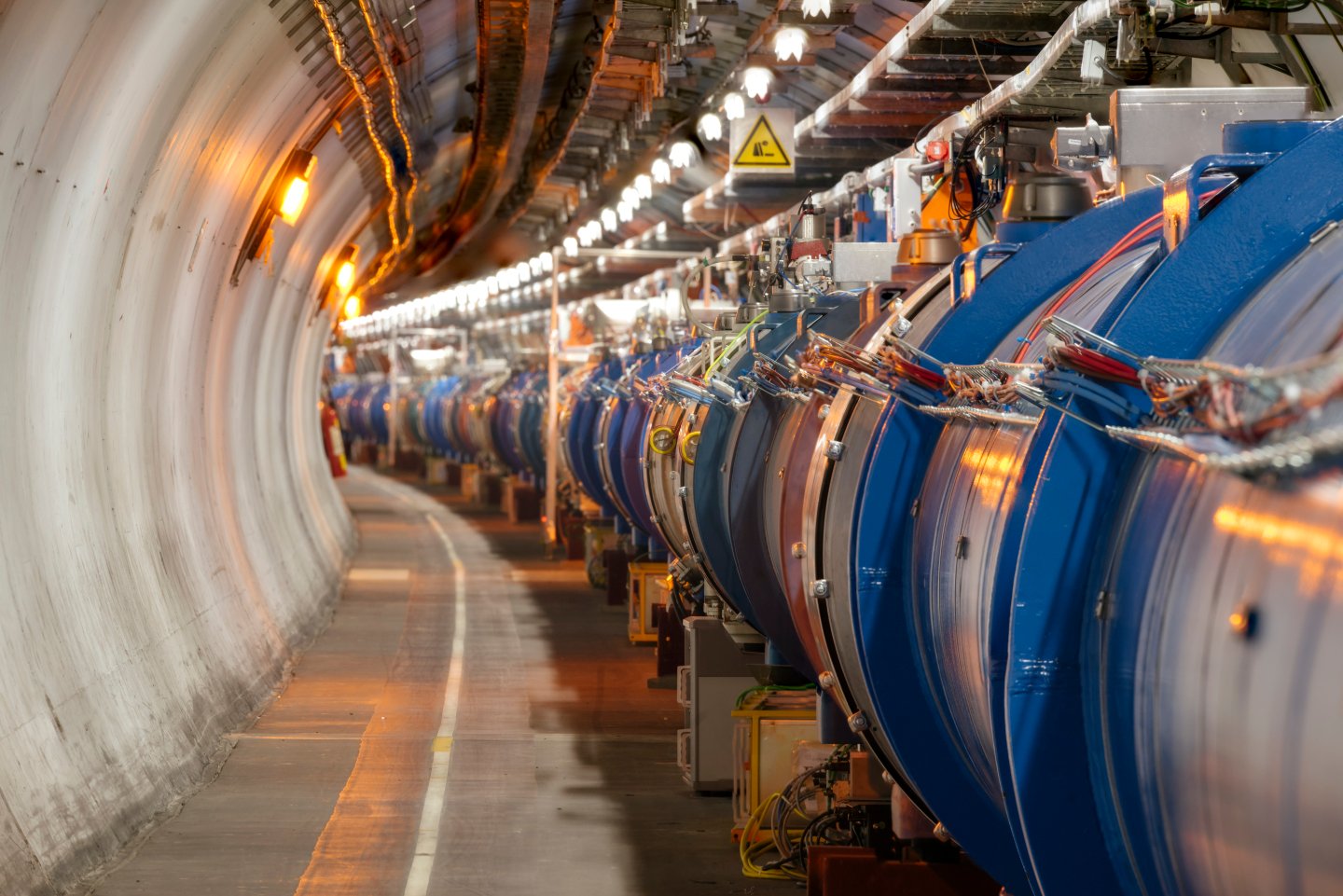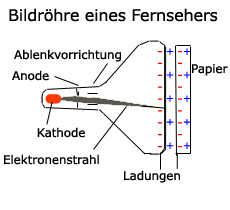Before our world had curved OLED TVS, people had to use tube TVs that were so big, a theatre had space in it to play the programm. Jokes besides, as I often see old tube TVs in front of houses, because the time came we don't need to bunker them on the attic anymore, I asked myself, how this old technology worked and why the Tvs had to be that big. The solution lies in the following text.
What if I tell you, they contain a particle accelerator inside their gehäuse?
Particle accelerator
Particle accelerators are devices in which electric charged particles (elementary particles, atom nuclei...) are accelerated to high speeds, near the speed of light. They get used for fundamental and applied research, but also in fields unrelated to fundamental research like in medizin, here they get used to fight cancer. For the topic today, this short description should be enough.

the large hadron collider at CERN, the most powerful particle accelerator on earth
There are two classes of accelerators: electrostatic and electrodynamik ones. The accelarator we are going to look at is an electrostatic accelerator.
The cathode ray tube
The cathode ray tube is the reason, you see a picture on the TV screen. It consists of an evacuated, closed glas tube with a heated cathode, a Wehnelt cylinder ( ocusing coil) which is placed in front of the cathode, an anode and several deflection coils. The principle behind is, the cathode has a positive charge. Because the glass envelope is evacuated, the electrons can fly free from the gun to the tubes face as the electrons get attracted by the anode, because they travel from the negative (cathode) to the positive (anode) charge. The focusing coil is also negativly charged and as the electrons make their way to the anode, they travel through it. The biggest distance an electron can take from the round cylinder, is the center of the circle it forms around it -> electron gets focused. The horizonatal and vertical deflection coils, are putted under voltage, so they can attract or deflect the electrons and enable to control the path of them. When an electron hits the tube's face, light gets emitted due to flourescence of three different (one for every color) phosphors.

In the TV
In a TV tube, magnetic fiels instead of electric fields get used to control the electron's way, making it possible to create a bigger beam ankle. By changing the voltages of the coils, the magneitc field changes and makes it possible to position the electron at any point of the screen due to the Lorentz force. Tricky: the vertical coil changes the horzizontal direction and vice versa. Three different electron canons, one for the colour red, one for green and one for blue get used and everyone of them targest the subpixel for its colour. Subpixels beacuse they aren't one pixel as they consist of one pixel of each colour. A person who watches TV is far enough away from the TV, so the person won't see the subpixels, but one uniform light source -> colour mixing = any colour can be created.

we can see the three different electron canons for each colour (the electrons itself have no colour its only for the illustration)
Concerns of the technology
CRTs can emit a small amount of X-ray radiation and older tubes contained toxic substaces in it e.g. cadmium in the phosphores. Also flicker can cause symptoms like headache or seizures in epilepsie and another concern is the implosion of the tube if the glas is damaged. A safety concern of sigals the CTRs radiate, is a process call Van Eck phreaking, where the signal radiated from the CTr is captured. After caputring the signal, it can reconstructed what was shown on the display -> danger of eavesdropping.
Why a paper sticks to the TV
The electrons shoot at the display, charge it negative on the inside. On the outside, it charges positive. The paper gets polarised and electrostatic attraction keeps the paper on the screen.

german pictures shows the positive charges in red, negative in blue and the paper ("papier")
Calculations
From the following equation, we can see that a body's ckinetic energy in an electric field equals the accelartion from the voltage betwen the anode and cathode:
A body with a mass m and a charge q gets accelarated through the electric field force. While passing the voltage U between the anode and cathode, it receives the energy qU, even if it isn't a unit field.
The body receives
Motion energy W= 1/2 * m *v ² =qU ( q is the charge of an eletron: 1, 6 · 10−19 C , m the mass: 9,1·10−31 kg)
If we form the euqation of motion energy to v, we get the equation for velocity as:
qU = 1/2 * m *v ² / *2
2qu= m v ² / √
√ (2qU) = mv / /m
√ (2qU) / m = v
so,
Velocity v= √ (2qU/m)
Conclusion
Today, I concentrated a bit on an old technology. Our TVs may look different now, but still, I thinks it is interesting that we had a particle accelerator in our earlier versions of a TV. For me, it is always interesting to understand how something works and I hope future will let me understand a bit more everyday.
Thanks for reading
Have a nice day :)
SourcesTexthttps://de.wikipedia.org/wiki/Kathodenstrahlr%C3%B6hre (translated)http://www.abi-physik.de/buch/das-elektrische-feld/braunsche-roehre/ (translated)http://physikunterricht-online.de/jahrgang-11/elektronen-im-elektrischen-feld/ (translated)https://en.wikipedia.org/wiki/Cathode_ray_tubeBildungshaus Schulbuchverlage, Physik Gymnasium Oberstufe SEK 2 Seite 15 (Druck A3, 2008) (translated)Pictureshttps://home.cern/sites/home.web.cern.ch/files/image/update-for_the_public/2017/04/01_ma27836-edit.jpghttp://sciencefacts.net/wp-content/uploads/2015/08/Cathode-Ray-Tube-Diagram.jpghttps://upload.wikimedia.org/wikipedia/commons/9/9b/CRT_color_enhanced.pnghttps://www.experimentis.de/site/wp-content/uploads/2013/06/406PapierTV.gif